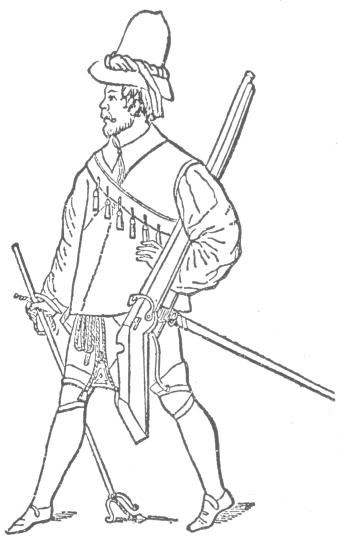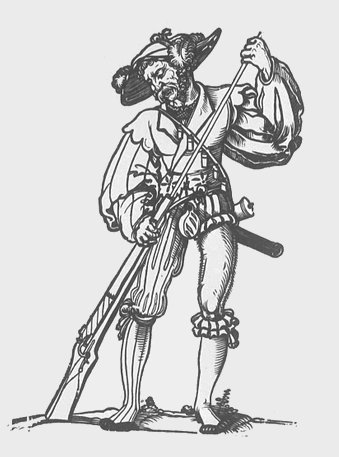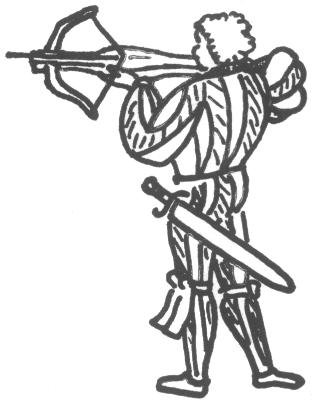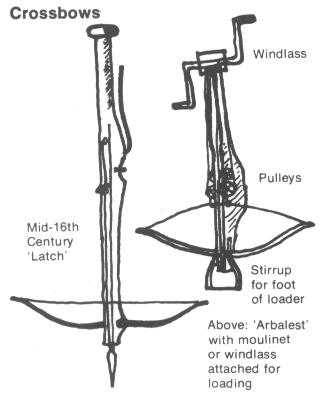
English musketeer 1586. Note match, bandolier, flask and rest.

A Lansknecht ramming the charge home in his arquebus.
by Hans Sebald Beham, 1540
Germanisches Nationalmuseum, Nurnburg


English musketeer 1586. Note match, bandolier, flask and rest. |
 A Lansknecht ramming the charge home in his arquebus. by Hans Sebald Beham, 1540 Germanisches Nationalmuseum, Nurnburg |


 A German crossbow-man of the early 16th Century, showing firing position. |
 Crossbows Mid-16th Century 'Latch' (left) & 'Arbalest' with moulinet or windlass attached for loading with stirrup for foot of loader (right) |
|
Previous: Part 2: Infantry weapons and organisation by George Gush Next: Part 4: The artillery by George Gush Return to Contents of Renaissance Warfare by George Gush (Airfix Magazine Articles) |